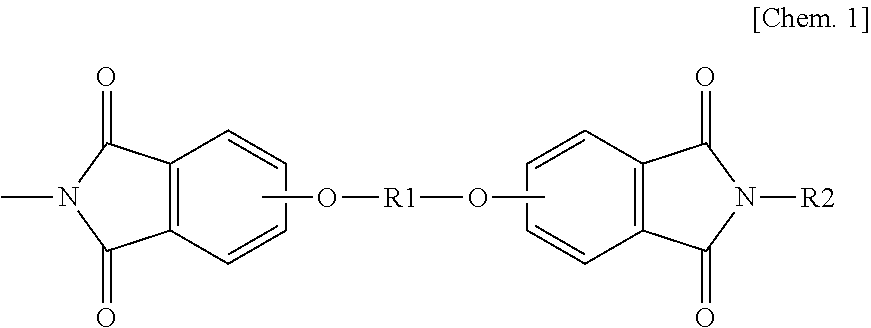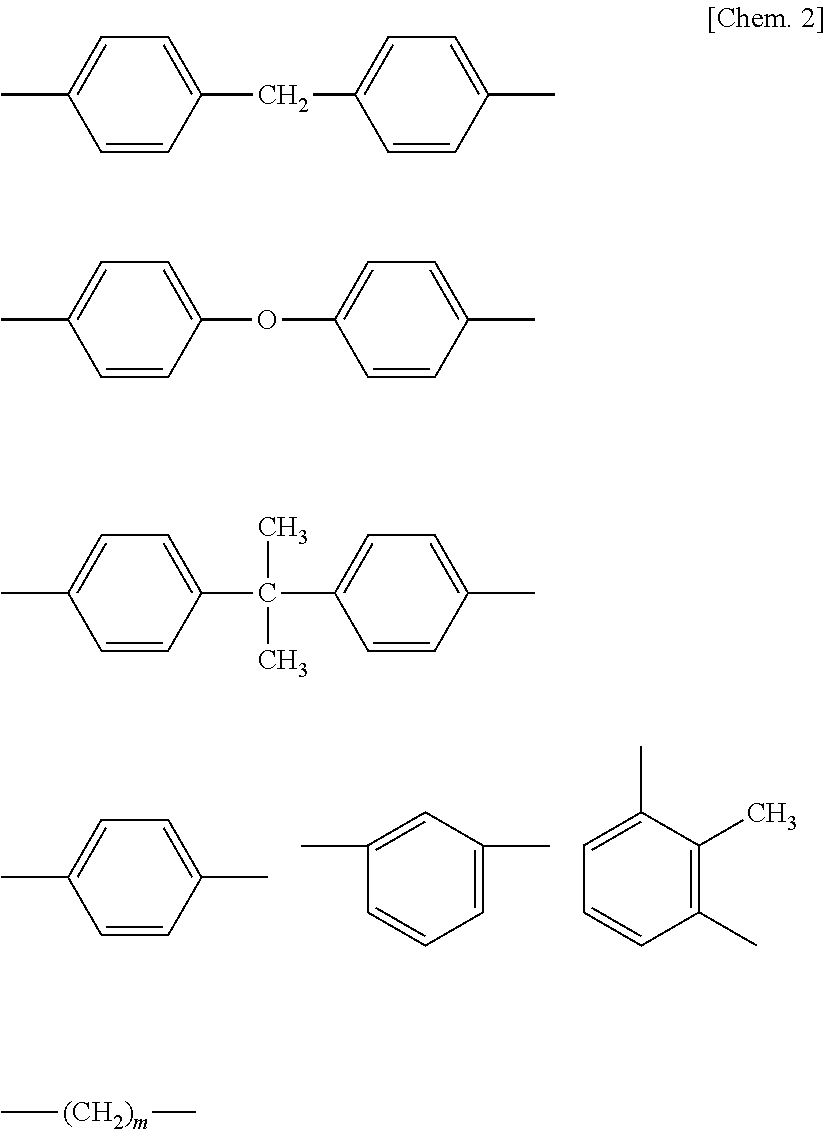Flame-retardant fiber, method for producing same, fabric using flame-retardant fiber, and resin composite material using flame-retardant fiber
a flame-retardant fiber and fiber-based technology, applied in the direction of dye addition to spinning solution, transportation and packaging, melt spinning methods, etc., can solve the problems of light-induced color and tenacity deterioration, and achieve and flame retardancy and light resistance and/or colorability
- Summary
- Abstract
- Description
- Claims
- Application Information
AI Technical Summary
Benefits of technology
Problems solved by technology
Method used
Image
Examples
example 1
[0113]Using a twin-screw extruder, were melt-kneaded and extruded 47.5 parts by mass of a polyethylene terephthalate polymer (a crystalline polyethylene terephthalate having [η]=0.6 and Tg=69° C.) manufactured by Tainan Spinning Co., Ltd, (hereafter abbreviated as C-PET polymer), 2.5 parts by mass of a C-PET-based master batch containing 20% of a carbon black pigment, and 50 parts by mass of a polyetherimide polymer (“ULTEM 9011” manufactured by SABIC Innovative Plastics Holding, an amorphous polyetherimide polymer having a weight-average molecular weight (Mw) of 32,000, a number-average molecular weight (Mn) of 14,500 and a molecular weight distribution (Mw / Mn) of 2.2) (hereinafter abbreviated as U-PEI polymer). After metering through a gear pump, the molten polymer was discharged from a spinneret having a hole diameter of 0.2 mm at 340° C. As-spun yarns were wound at a rate of 1,500 m / min. to obtain multi-filaments (84 dtex / 24 f). Thus obtained blend fibers had a polymer ratio (U-...
example 2
[0114]Using a twin-screw extruder, were melt-kneaded and extruded 25 parts by mass of a C-PET-based master batch containing 20% of Thinuvin1600 [ultraviolet absorber] (manufactured by BASF) and 75 parts by mass of a U-PEI polymer. After metering through a gear pump, the molten polymer was discharged from a spinneret having a hole diameter of 0.2 mm at 350° C. As-spun yarns were wound at a rate of 1,500 m / min. to obtain multi-filaments (84 dtex / 24 f). Thus obtained blend fibers had a polymer ratio (U-PEI polymer / C-PET polymer) of 79 / 21 (mass ratio) and a glass transition temperature of 174° C., and contained 5% by mass of the ultraviolet absorber as a functional additive.
example 3
[0115]Using a twin-screw extruder, were melt-kneaded and extruded 15 parts by mass of a C-PET-based master batch containing 20% of Thinuvin1600 [ultraviolet absorber] (manufactured by BASF), 10 parts by mass of a master batch containing 20% of perylene pigment, and 75 parts by mass of a U-PEI polymer. After metering through a gear pump, the molten polymer was discharged from a spinneret having a hole diameter of 0.2 mm at 350° C. As-spun yarns were wound at a rate of 1,500 m / min. to obtain multi-filaments (84 dtex / 24 f). Thus obtained blend fibers had a polymer ratio (U-PEI polymer / C-PET polymer) of 79 / 21 (mass ratio) and a glass transition temperature of 176° C., and contained 3% by mass of the pigment and 2% by mass of the ultraviolet absorber as functional additives.
PUM
| Property | Measurement | Unit |
|---|---|---|
| molecular weight distribution | aaaaa | aaaaa |
| glass transition temperature | aaaaa | aaaaa |
| glass transition temperature | aaaaa | aaaaa |
Abstract
Description
Claims
Application Information
 Login to View More
Login to View More - R&D
- Intellectual Property
- Life Sciences
- Materials
- Tech Scout
- Unparalleled Data Quality
- Higher Quality Content
- 60% Fewer Hallucinations
Browse by: Latest US Patents, China's latest patents, Technical Efficacy Thesaurus, Application Domain, Technology Topic, Popular Technical Reports.
© 2025 PatSnap. All rights reserved.Legal|Privacy policy|Modern Slavery Act Transparency Statement|Sitemap|About US| Contact US: help@patsnap.com



